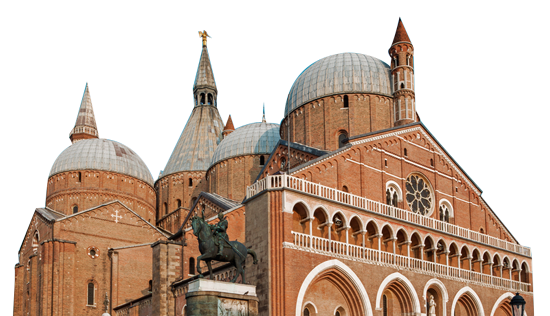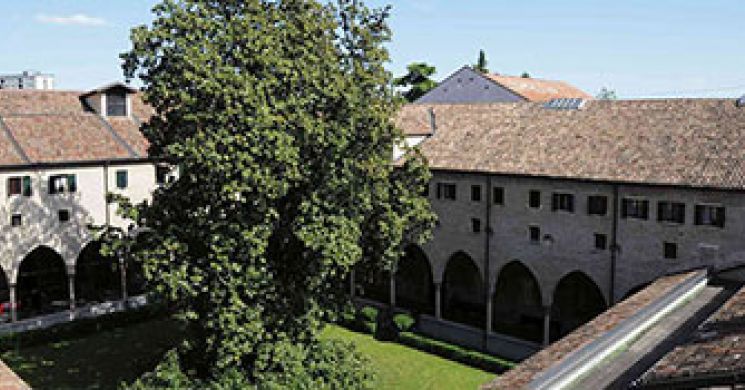So-named on account of the magnificent magnolia tree which rises from the lawn at the centre of the cloi ter, this area is also known as the Chapter Cloister, be cause from the side perpendicular to Basilica is to be found the great Capitular Hall...
The Friary and Novitiate Cloister
On the south side of the Basilica is the Franciscan Friary, which developed gradually through the centuries from the humble dwelling of St. Anthony. There are various buildings, characterised by five enclosed courtyards or cloisters.
These are known as the Paradise Cloister; the Novitiate Cloister; the Magnolia Cloister; the General Cloister; and the Museum (or Blessed Luke Belludi) Cloister.
The most elegant of these is the Novitiate Cloister, so-named because in one of its sections reside the young men who aspire to the Franciscan lifestyle. The Museum Cloister gives access to the Anthonian Museum and the Museum of Popular Devotion, while the General Cloister gives access to the fascinating Multimedial Exhibition on the life of St. Anthony. The friary has witnessed many events, and has welcomed, over the centuries, many important religious figures, famous for their holiness, culture, or the important roles they played in the Catholic Church. The future Pope Sixtus IV was educated here in the 15th century; Popes Pius VI and VII stayed here during their pilgrimages, as did Saint Pope John Paul II during his pastoral visit to Padua in 1982.


